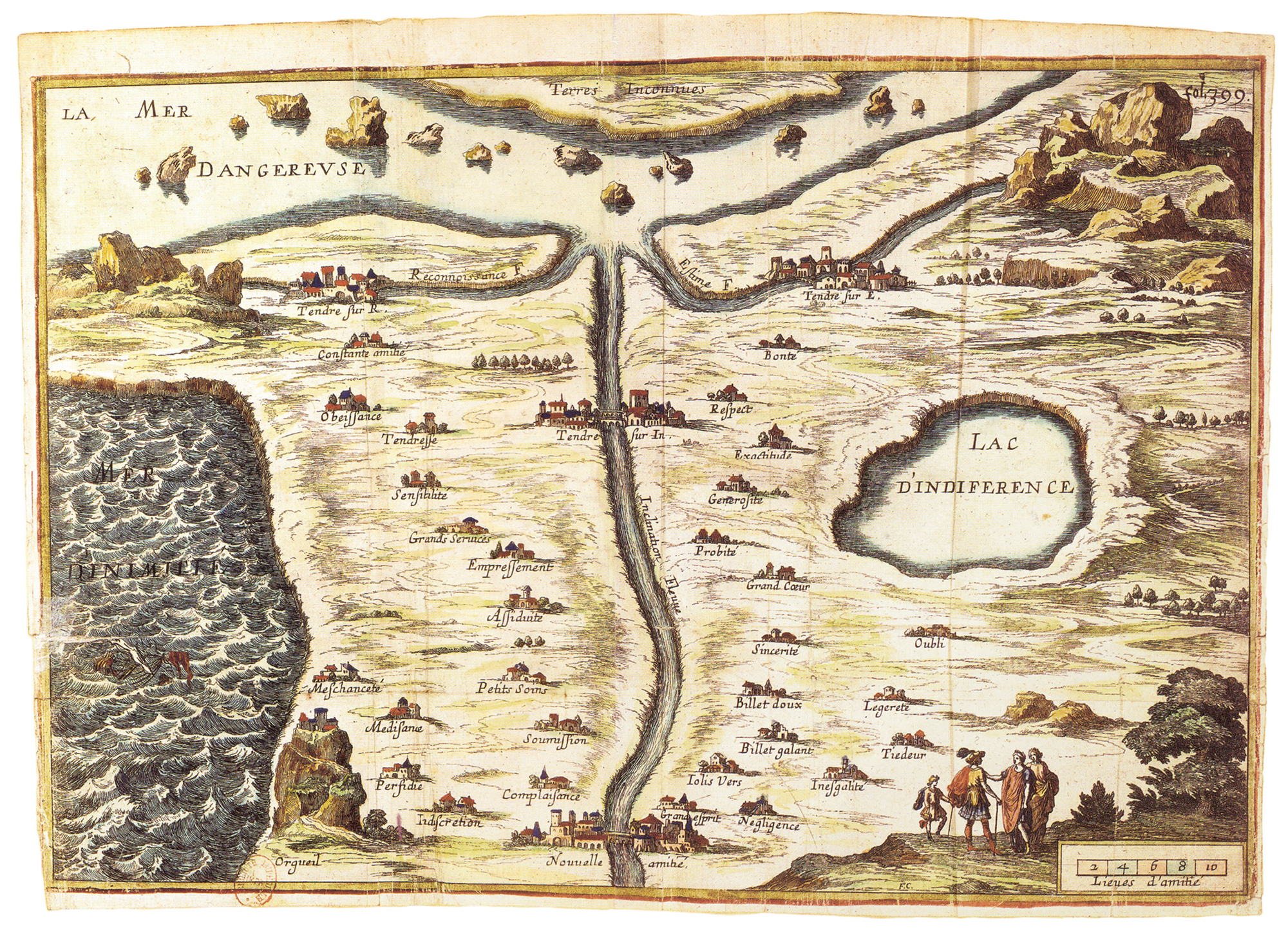Heart-Shaped World
Amorous cartographies
James Trainor

Though an army should lay siege against me, my heart shall not fear: though war should rise against me, in this will I be confident.
—Psalms 27:3
It is remarkably satisfying, if completely serendipitous and ultimately meaningless, that Clélie would be the name of the eponymous heroine of Madeleine de Scudéry’s epic ten-volume novel of 1654–1661, less famous for its literary merits than for its frontispiece: a detailed pictorial map of Love, the allegorical Carte de Tendre. The map—the wellspring for all subsequent metaphorical visualizations of human emotion and sentiment as a network of spatial relationships, picaresque journeys, and topographical narratives—would become hugely influential, and was imitated and often parodied in the centuries that followed. The serendipity lies in the fact that a clélie is also the name of a curve—specifically a curved path in space, of any trajectory or duration but confined to the surface of a sphere, such as a globe. Any point on that curve can be described by a simple and elegant mathematical equation discovered by the scientist and mathematician Clelia Borromeo, for whom it is named. Borromeo was, like Scudéry, a polymath, a precocious intellectual, and, notably, a woman who succeeded in charting her own independent and ambitious path through life. If you were searching for spatial metaphors for how an infinite number of wayward, arcing paths across the surface of the earth could be described neatly, gracefully, and scientifically, you could do worse than that of the clélie. But the accidental poetic concordance would have been lost on Scudéry, since Borromeo wasn’t born until 1684 and did not make her discovery until 1728.
The Carte de Tendre, a product of lively literary and philosophical game-playing among the regulars at Scudéry’s Parisian bluestocking salon, the Société du samedi, was also born directly out of the European Age of Discovery, which introduced a flood of maps of every conceivable place that could be known (and even many that could not and had to be imagined) to a public hungry for factual visualizations of the world beyond their everyday experience. The Carte is an unusual amalgam of sentimental and rationalist orienteering finding happy confluence within the newfangled and reassuringly scientific construct of the map, a form whose conventions and codes of spatial representation, quickly understood and absorbed by the culture at large, lent credence to the idea that the hitherto undiscovered recesses of the human heart could be objectively charted. The mysteries of love, passion, tenderness, and desire, once as impenetrable as a tangled primeval wilderness, could be rationalized, measured, and tamed within a system of established landmarks and coordinates. But the Carte de Tendre is more than a poetic description of places and things. It is a graphic metaphorical travel narrative in potentia suggesting movement and choice, full of implicit hazards and safe havens, moral culs-de-sac and righteous end-destinations, yet without any overarching proscriptive itinerary. The prospective armchair lover setting out from the town of Nouvelle Amitié in quest of the city of Tendre, discovers on the map, as if in a Calvino-esque puzzle, that there are actually three such cities, each arrived at via distinct routes (the River of Inclination, the River of Esteem, and the River of Recognition). Each route has its merits and dangers, its beneficial way stations and psycho-geomorphic pitfalls, but the shades of difference between these various types of progress are nearly as subtly gradated as the unfathomable calculus of mutual attraction that they attempt to allegorize.[1]